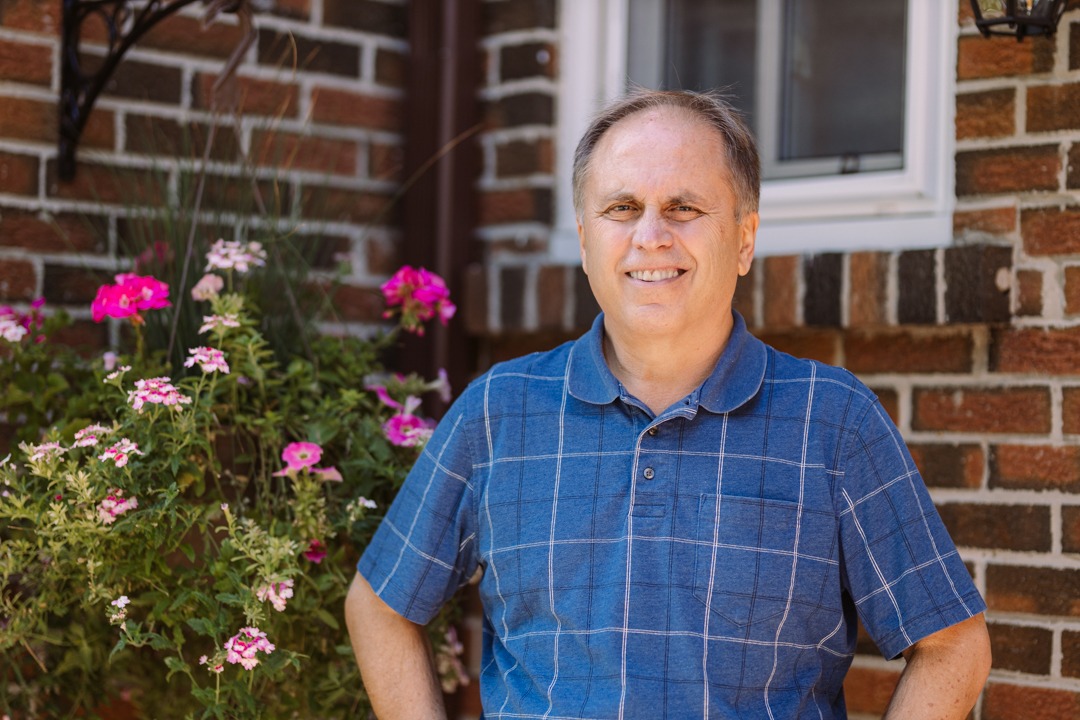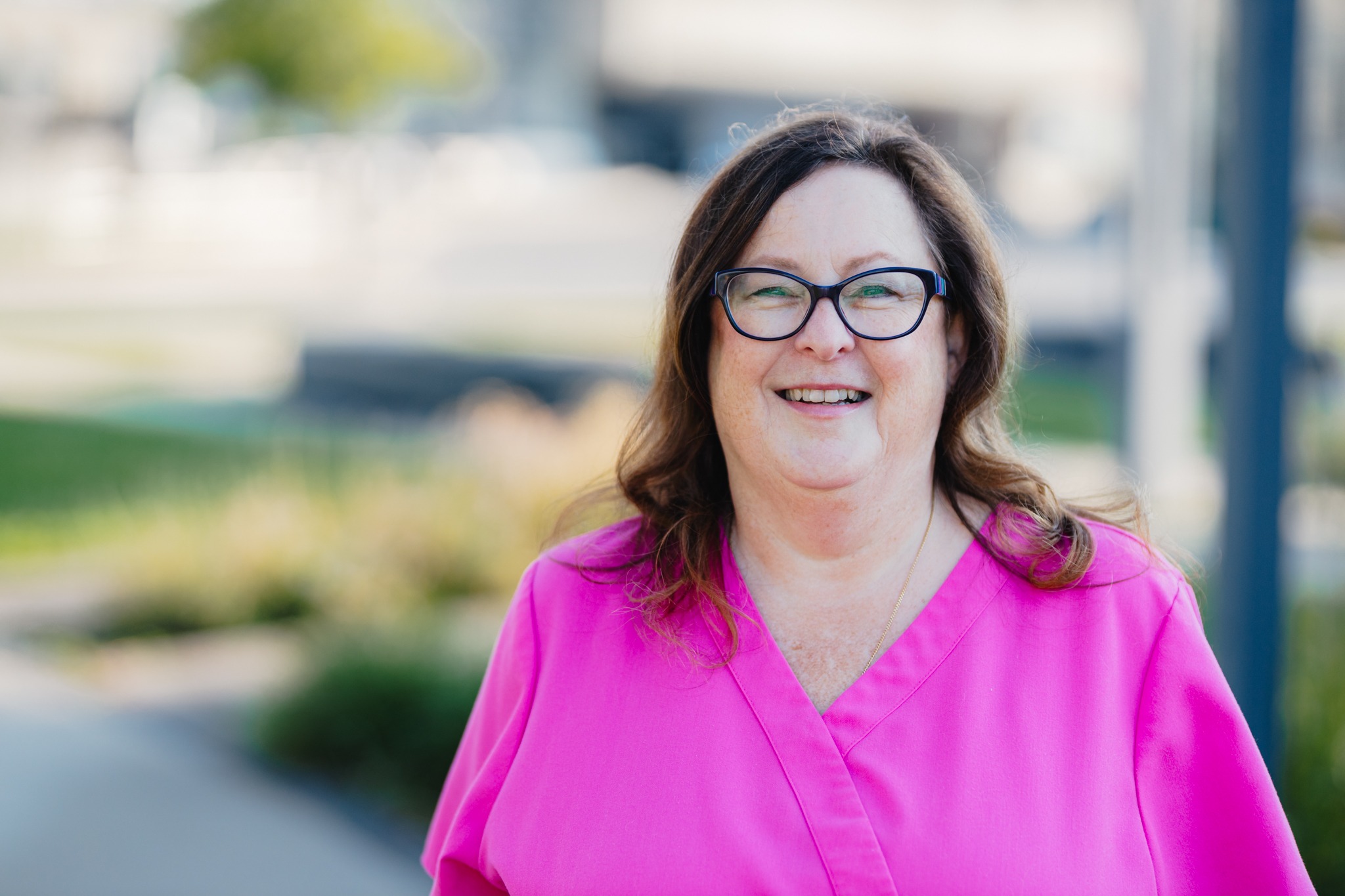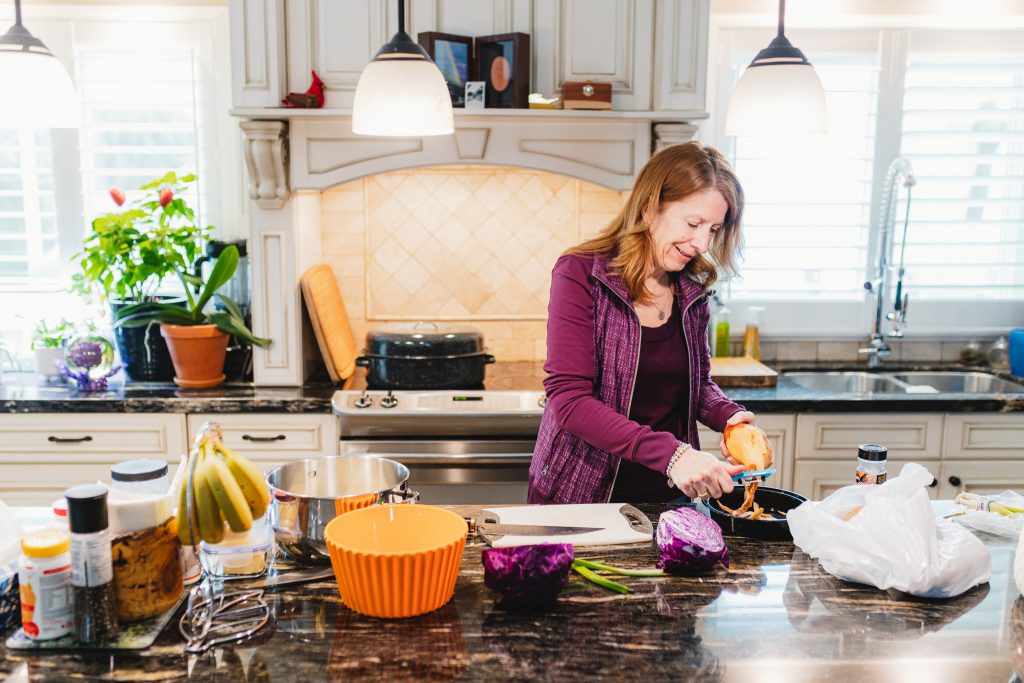
Enjoying the little things in life – a journey with chronic pain
Sharon Hammel had, as she describes it, “the ideal life” – three amazing kids, a wonderful husband and her dream job as a pilot. Then in 2015, she had some major and unexpected complications after dental surgery which resulted in trigeminal neuralgia – severe nerve pain on one side of the face. This is when her journey with chronic pain began.
“The pain was unrelenting and unbearable,” says Hammel. “It not only takes a toll on the body physically, but mentally as well.”
What makes chronic pain so challenging to manage is that it requires an individual approach. Each person responds differently to medication and therapies, which means it takes time to find what works best.
Feeling hopeless
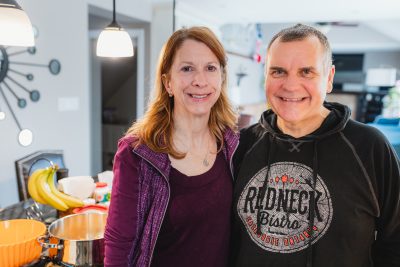
Sharon’s biggest supporter though her chronic pain journey has been her husband Dan.
Hammel was already receiving care at Hamilton Health Sciences’ Michael G. DeGroote Pain Clinic for back pain. It had been well managed until her medication changed after the dental complications. When she went back to the Pain Clinic, her doctor noticed the updated medical documents and referred her to a different doctor in the clinic to help with the facial pain.
“I was desperate for relief!” says Hammel. “Not only was the pain overwhelming but after trying multiple options without success I began to feel defeated. That’s when the depression crept in.”
Without relief from the pain, her sleep was fragmented and she lacked energy. She began to lose contact with friends and family and had a general lack of interest in life itself.
“Until you experience chronic pain, it’s hard for others to understand. That makes those of us who have it feel very lonely,” she says. “Not only was I struggling with the pain, but also grieving the wonderful life I no longer had.”
Finding relief
It took a few years for Hammel to finally find something that helped. By that time, she says she had become an empty vessel that vaguely resembled the person she once was.
Once the pain relief began, the next struggle was to begin living life again.

Dr. Eli Adly
“Pain management is about more than just treating with medication,” says Dr. Eli Adly, pain specialist at the pain clinic. “Chronic pain has physical and mental impacts that should all be addressed to ensure the best success for our patients.”
Thanks to the clinic’s medical director Dr. Ramesh Zacharias, the pain clinic’s care model includes a whole team of professionals including psychologists, occupational therapists, social workers and more, working together to tackle chronic pain from different angles and help each patient modify their lifestyle to best manage their pain.
“While Sharon finally experienced pain relief with the rare treatment of ketamine infusions, I also worked with her to determine her goals moving forward and the steps needed to achieve them,” says Adly.
Learning to live again
With the help of the pain clinic, Hammel has been able to regain control of her life. While it was extremely difficult, she says she did it one step at a time, no matter how small the step.
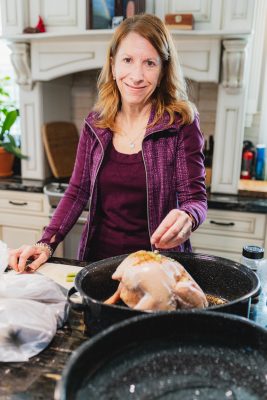
Sharon Hammel worked hard to be able to once again cook dinner for her family as she struggled to regain control of her life while managing chronic pain.
“All the doctors and specialists work together to help find a solution that works for you,” she says. “They understand the impact of chronic pain and truly care about you. That makes such a difference!”
Hammel decided to make food one area of focus in her recovery. Since the pain had diminished her appetite, she started with small goals to get herself back to eating healthy. Next, she wanted to cook dinner again for her family. Since there are lots of steps to planning and making a successful home-cooked meal, this required a slow approach.
“I started with just helping with a little bit of the meal prep and didn’t aim to do it every day as I had other goals I was also working towards. I had to be careful not to stress myself and potentially trigger more pain.”
Another goal was to begin self-care practices — not going to the hair salon, but taking a few minutes to self-reflect on positive emotions, instead of the ones that are connected to the pain. While Hammel had never been interested in yoga before, she decided to give it a try and found it very helpful.
Hammel enjoys the little things in life that most people take for granted when everything is going well in their lives. While she still has some work ahead of her, she’s on the right track to finding her “new normal.”
“I’ve learned that when it gets too hard, too dark, too painful, to just look around – there is inspiration all around us.”

